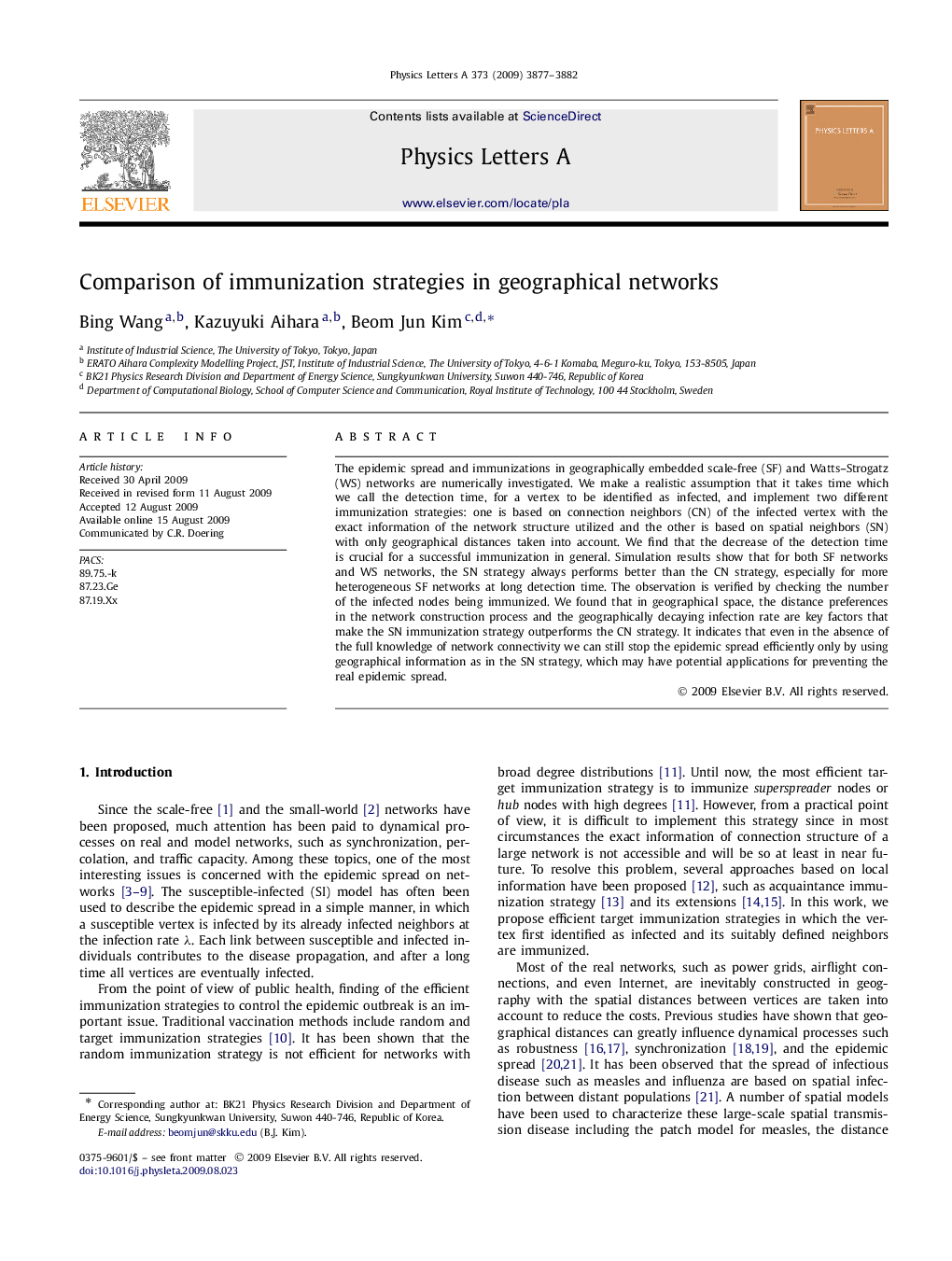| Article ID | Journal | Published Year | Pages | File Type |
|---|---|---|---|---|
| 1861988 | Physics Letters A | 2009 | 6 Pages |
The epidemic spread and immunizations in geographically embedded scale-free (SF) and Watts–Strogatz (WS) networks are numerically investigated. We make a realistic assumption that it takes time which we call the detection time, for a vertex to be identified as infected, and implement two different immunization strategies: one is based on connection neighbors (CN) of the infected vertex with the exact information of the network structure utilized and the other is based on spatial neighbors (SN) with only geographical distances taken into account. We find that the decrease of the detection time is crucial for a successful immunization in general. Simulation results show that for both SF networks and WS networks, the SN strategy always performs better than the CN strategy, especially for more heterogeneous SF networks at long detection time. The observation is verified by checking the number of the infected nodes being immunized. We found that in geographical space, the distance preferences in the network construction process and the geographically decaying infection rate are key factors that make the SN immunization strategy outperforms the CN strategy. It indicates that even in the absence of the full knowledge of network connectivity we can still stop the epidemic spread efficiently only by using geographical information as in the SN strategy, which may have potential applications for preventing the real epidemic spread.
